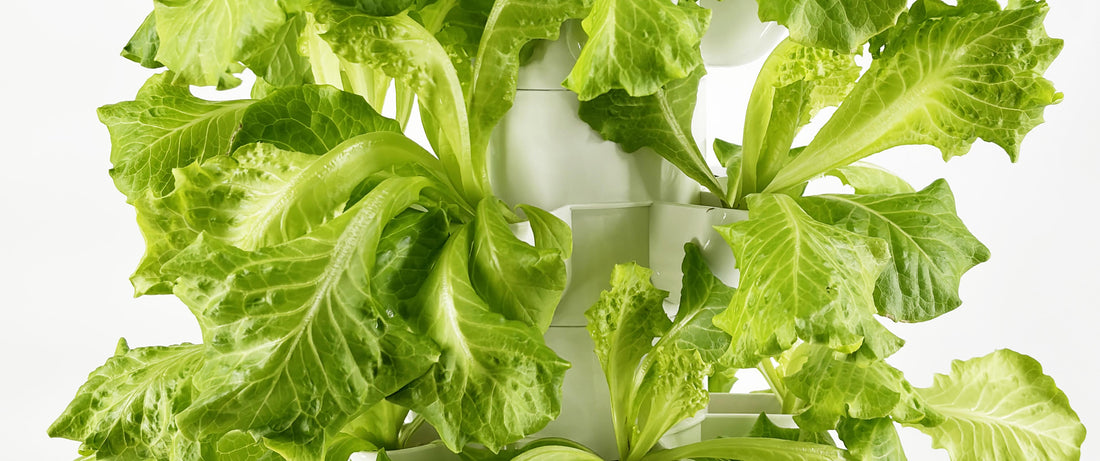
Exploring Different Types of Hydroponic Systems
Share
Are you ready to transform your living space into a thriving green oasis? Hydroponics—the art of growing plants without soil—has revolutionized indoor gardening, making it accessible, efficient, and downright exciting. At DPROOTS, we’re passionate about empowering urban growers like you to cultivate fresh produce year-round. But with so many hydroponic systems out there, how do you choose the right one? Let’s dive into the most popular methods, their pros and cons, and which might suit your lifestyle best.
1. Nutrient Film Technique (NFT)

How it works: NFT systems use sloped channels to circulate a thin film of nutrient-rich water over plant roots. The roots absorb what they need while the excess drains back into a reservoir.
Pros:
- Space-efficient: Ideal for compact spaces like apartments.
- Low water use: Recirculates solutions, reducing waste.
- Great for leafy greens: Perfect for fast-growing herbs (basil, mint) and lettuce.
Cons:
- Power-dependent: Pump failures can dry roots quickly.
- Not for heavy plants: Tomatoes or cucumbers may clog channels.
Best for: Beginners craving low-maintenance greens.
2. Hydroponic Tower

- Space-Saving: Hydroponic towers are designed to maximize vertical space, making them ideal for small indoor spaces.
- High Yield: The vertical design allows for a large number of plants to be grown in a small area, resulting in a high yield.
- Aesthetically Pleasing: Hydroponic towers can be a decorative addition to any indoor space, adding a touch of greenery and a modern look.
- Limited Root Space: The limited space in each tier may restrict the growth of plants with large root systems.
- System Maintenance: Hydroponic towers require regular maintenance, including checking the nutrient levels, cleaning the system, and ensuring the proper functioning of the pump.
- Initial Cost: The cost of purchasing a hydroponic tower can be higher compared to some other hydroponic systems.
Deep Water Culture (DWC)

- Simple and Cost-Effective: DWC systems are relatively easy to set up and require fewer components compared to other hydroponic systems.
- Large Root Zone: The deep water provides a large root zone for the plants to grow, allowing them to absorb more nutrients and water.
- Suitable for a Variety of Plants: DWC systems can be used to grow a wide range of plants, including tomatoes, peppers, and cucumbers.
- Water Temperature: The water temperature in a DWC system can be difficult to control, especially in warmer environments. High water temperatures can lead to oxygen depletion and root rot.
- Nutrient Imbalance: If the nutrient solution is not properly balanced, the plants may not receive the right amount of nutrients, leading to stunted growth or nutrient deficiencies.
- Limited Space: DWC systems require a large container, which may not be suitable for small indoor spaces.
Aeroponics

- Faster Growth: Aeroponic systems can promote faster growth compared to other hydroponic systems, as the roots have direct access to oxygen and nutrients.
- Water and Nutrient Efficiency: Aeroponics uses less water and nutrients compared to traditional soil gardening, as the mist is recirculated.
- Disease Resistance: Since the plants are not in contact with soil, they are less likely to be affected by soil-borne diseases.
- System Complexity: Aeroponic systems require a pump, misting nozzles, and a reservoir, which can be more complex to set up and maintain compared to other hydroponic systems.
- Power Dependency: Aeroponic systems rely on electricity to operate the pump and misting nozzles. If there is a power outage, the plants may not receive the necessary nutrients and oxygen.
- High Initial Investment: Aeroponic systems can be more expensive to set up compared to other hydroponic systems, as they require specialized equipment.
Kratky Hydroponic Method

- Ultra - Simple Setup: It is one of the simplest hydroponic methods. All you need is a container, a way to hold the plants (like net pots), and the nutrient solution. There are no moving parts, which means less to break or maintain.
- Low Cost: Since it doesn't require pumps or other expensive equipment, it is very cost - effective. This makes it an excellent option for those on a tight budget or just starting out with hydroponics.
- Suitable for Small Spaces: The compact nature of the Kratky setup makes it great for small apartments, balconies, or even windowsills. You can easily fit a few containers in a small area and start growing your own produce.
- Limited Growth Duration: As the water and nutrients are not replenished automatically, the system is best suited for short - term crops. Once the nutrient solution is depleted or the water level gets too low, the plants may start to suffer.
- Less Control over Nutrient Levels: Without a recirculating system, it's more difficult to adjust the nutrient levels precisely as the plants grow. You have to rely on pre - mixed solutions and hope they meet the plants' changing needs throughout their growth cycle.
- Risk of Over - or Under - Saturation: If the initial water - to - nutrient ratio is off, or if the container is not sized correctly for the plant, there can be issues with over - saturation (too much water, not enough oxygen) or under - saturation (too little water, not enough nutrients) of the roots.
